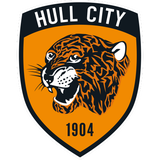
Arsenal vs. Hull City: Defense Better But Needs Work

While Arsenal were solid in defense against Hull City, there are worrying signs that may spell disaster against more accomplished sides.
On speaking to ITV after Arsenal’s miraculous 1-1 draw to PSG, legendary defender Lee Dixon rang a comment Arsenal fans have heard for some time: “With the ball we’re brilliant, but without it absolutely shocking, they don’t know what they’re doing.”
Related: 5 Things We Learned Against Hull City
In many ways he’s right and at times against PSG the lack of cohesion outside of possession led to some excellent chances. If Edinson Cavani didn’t transform into Lord Bendtner, PSG could have scored four goals.
While we looked solid in defense against Hull, there are worrying signs that may spell disaster against more accomplished sides.
Arsenal in many ways employ a peculiar pressing scheme, more off-the-cuff than anything representing the gegenpressing of Jurgen Klopp and Roger Schmidt at Bayer Leverkusen.
Typically, a strong pressing team focuses on two aspects: strong team structure and compact shape. RB Leipzig’s efficient performance in their 1-0 win against Dortmund typifies this. Deploying a compact 4-2-2-2, Ralph Hasenhüttl set his players in an organized shape built around nullifying the central spaces during build-up. When the ball shifted across the back line, Leipzig moved as well, maintaining a compact block through observation and good team communication. Dortmund’s possession grew stale and couldn’t create chances in transition.
When Arsenal transition to attack, their formation changes into an aggressive 4-1-4-1. When they maintain strong possession in the final third, it becomes a 2-1-4-3, with the full-backs providing width and either Cazorla/Coquelin joining Özil further forward.
Even Coquelin entered into the Arsenal passing game.
Hardly ever see so many big dots so far advanced.#passmap #AFC pic.twitter.com/rJUm1ZCZ1S— 11tegen11 (@11tegen11) September 17, 2016
When Arsenal first lose possession, they deploy a man-mark pressing scheme, seeking to win the ball higher up the pitch and transition faster into attack. The third goal illustrates this perfectly. Davies was forced to play to Mbokani due to their midfielder’s being man-marked and Sanchez’s quick pressing. Mustafi wins the ball at the half-way line and Coquelin finds Sanchez in the space vacated by the Hull midfield. He passes to Walcott, who misses, and Sanchez powers in the rebound.
When the pressing is slow or disjointed, Arsenal become exposed. If an effective gegenpressing team utilizes a compact team shape, Arsenal blow it up. At times against Hull, massive spaces between the midfield and defense open up due to bad spacing (the pass map shows some horrible spacing in midfield).
It puts greater pressure on the back four to cover the gaps and against a better side these would be exploited. Fortunately, Hull struggled to build chances from the back when they gained possession.
PSG were better at times, with Verrati’s pass to Cavani in the 34th minute and Rabiot’s run in the 69th prime examples. Liverpool were brilliant at exposing the spaces left by the Arsenal defenders, so much that it likely made Klopp giddy at half-time. Luckily, Arsenal have two ball-playing defenders in Koscielny and Mustafi who are quick to read the game and close down spaces.
For Arsenal it is less a personnel than a tactics issue. At times, Arsenal maintain a compact shape when they are able to organize themselves. But with modern teams better at transitioning from defense to attack, a strong shape is required to nullify the spaces between the lines.
The pass map above against Hull demonstrates the potential problem areas when they lose possession. This is why many wonder whether Xhaka should start, as he is more positionally sound than Coquelin. Wenger likely prefers Coquelin when they expect to dominate possession, since he is quicker than Xhaka and adept at winning the ball.
Coquelin’s aggressiveness, though, can leave big gaps that need to be covered by others. Cazorla is supposed to fill this role though can be slow to cover the gaps. This can be smoothed out in training though one wonders whether Wenger spends much time on it, considering that counter pressing has been an issue for several years now.
Next Post: 50 Most Defining Moments As A Club
Against Chelsea, Arsenal must be careful. Hazard and Willian are adept at finding spaces in which to operate. If Arsenal are too adventurous in possession and fail to maintain a strong shape in transition, it is not difficult to envision Dixon’s familiar tune.
More from Pain in the Arsenal
This article originally appeared on

